How to Grow Onions
Onions are a versatile addition to many recipes, adding flavor to foods that are otherwise bland and tasteless. While they can be brought from a grocery or supermarket, onions that are grown in the garden contain a sweetness that store bought ones lack. A member of the Allium genus that also includes garlic, shallots, leeks, scallions, chives and ornamental Alliums, they are most often planted during the spring or fall. Below are several types of onions and how to use them.

- Yellow Onions: Yellow onions are a standard in cooking. If the recipe does not specify the type, it is assumed to be a yellow onion. Its strong sulfur content lends it a pungent flavor, and they hold up well during caramelizing. Spanish onions are a milder relative that can be substituted by yellow onions.
- Sweet Onions: Sweet onions are larger than yellow onions, with lighter colored yellow skin. Due to their mild, sweeter flavor, they are ideal in salads, relishes, and garnishes. They can also be made into onion rings. Some varieties include Walla Walla, Maui, and Vidalia.
- Red Onions: Red onions can be eaten both raw and cooked. Its deep magenta color makes it suitable for salads and other raw preparations such as salads and burgers. They tend to be medium to large in size and have a sharp flavor.
- White Onions: White onions have a papery white skin and are milder and sweeter than yellow onions. They are used in salsas, guacamole, tacos, and other Mexican foods.
- Shallots: Shallots are small, coppery skinned onions with a purple color. They share similarities with garlic, containing a delicate flavor with a hint of sharpness. Due to their slight sweetness and size, they are often minced and used in sauces and dressings.
- Green Onions: Also called scallions, green onions are onions that have not formed a bulb, or only partially. They are often used in garnishes, omelets and soups.
Conditions for Growing Onions
Onions can be grown from seeds, from transplants, or from small bulbs called sets. In addition to size and color, onions are also grouped by the number of daylight hours required for them to grow. Short day onions begin to develop bulbs once daylight hours increase to 10 to 12 hours a day. They are ideal for gardeners in the southern states with mild winter climates. Long day onions 14 hours or more of daylight, while day neutral, or intermediate varieties require 12 to 14 hours. Long day onions are usually grown in the northern states. Before planting, check to see which varieties are suited for your area.
When: Onions are a cool weather crop that can stand temperatures that are below freezing. While most gardeners choose spring to plant onions, those that live in areas with milder winters can also grow them in the fall. Short day onion sets are usually planted in the fall, and long day onions in the spring. Onion plants take 90 days or more to mature.
Where: Onions can be grown in raised garden beds or containers. Raised garden beds are recommended for growing cool-weather crops because they allow you to control the soil quality and maintain a consistent temperature during changing seasons and temperature fluctuations. They can also be planted indoors in trays.
The ideal soil is sandy loam that is loose, well-draining, and rich in organic matter, with a soil pH of 6 – 7. If your soil has drainage problems or has subpar composition, you can consider growing your onion in metal raised garden beds that are at least 12 inches tall. Select a location that receives direct sunlight for at least six hours.
Onions are a popular companion plant that deters pests. Companion planting is a useful way to maximize space, particularly if you have limited space or are growing in garden beds. It can be planted next to herbs such as chamomile, or flowers such as roses and marigolds, which also deters pests. Many vegetables can be planted alongside onions, including carrots, cabbage, and tomatoes.
How to Plant from Seed
Onions that are started from seed can be planted indoors or directly outside, which is not recommended for northern climates. Although it is more difficult, it can yield better results, making it suited for the more experienced gardener. You can plant onion seeds outside in late winter or early spring once the ground is no longer frozen. Place the seeds ½ to ¼ inches deep and 4 inches apart. Cover the seeds with damp soil. Thin them to 4 inches apart to avoid crowding.
Alternatively, they can be started indoors from trays using seed starting equipment. Start onion seeds indoors 8 – 10 weeks before the last spring frost date. Use a high quality, seed starting mix. Plant the seeds by placing two seeds in a cell or pot and covering them with 1/8 in of soil. Place them on a heating mat or a sunny area to help keep the soil warm, using a grow light or other fixture to ensure plenty of light and leaving them on for 10 – 12 hours a day. Although they sprout consistently in temperatures of 70 – 75°F, you can move them to a cooler area about 60 – 65°F once they sprout.
The third method, known as winter sowing, is when seeds are sown outside in a covered container during the winter – between late December to February. You can choose this method if you want to skip the hassle of starting it indoors using specialized equipment. Choose a container with drainage holes, and fill it with potting soil. Sprinkle the seeds onto the soil about ¼ to ½ inch apart and cover with a light layer of soil. Place the lid on the container and put it in a shady protected spot outside. Once the seedlings start to sprout, monitor them and water when necessary.
How to Plant from Sets
Onion sets are small bulbs that have been forced into dormancy, and should be planted 2 – 4 weeks before the last frost date. Space them 4 – 6 inches apart in shallow furrows and cover with soil so that only the tip remains visible. Instead of looking for the largest bulbs, choose ones that are about ½ inch in diameter, which will have a better chance of producing better-quality bulbs.
How to Plant from Transplants

If you have grown onion seedlings indoors and want to move them outdoors, they need to undergo a process known as hardening off. To harden off, place your seedlings in a protected spot outside for a few hours, gradually increasing the outdoor exposure until they are accustomed to a full day of sunlight. To transplant, remove the seedlings gently from the container and plant them 3 to 4 inches apart, depending on variety. Once they have been planted, gently water the seedlings, continuing to water frequently until they have become established. Apply mulch to established seedlings to suppress weeds and deter pests.
Care: Mulch is important as it blocks out weeds, which will compete with plants and siphon away nutrients, resulting in lower yields and smaller bulbs. Avoid high nitrogen fertilizers if your soil already has adequate nitrogen levels, which can result in leaf growth at the expense of the bulbs. For most garden soils, a nitrogen-based fertilizer is recommended. Stop fertilizing after midsummer, once the bulbs have started growing.
Onions benefit from thorough, occasional watering. In soil with ideal drainage, add about 1 inch of water per week, which should be adjusted depending on weather conditions. Cut off the green tips to conserve energy for developing larger bulbs.
Onions are fairly pest free, although they can be affected by onion flies or thrips. Apply sticky traps, diatomaceous earth, or use crop rotation to get rid of onion flies. Mulch can help deter thrips, serving as a barrier and preventing larvae from overwintering.
How to Harvest and Store Onions

Onions can be harvested from late summer or early fall when the tops naturally start to fall over and yellow. Once this occurs, reduce watering or stop completely to prevent rot. To harvest, gently lift the bulb up by hand or using a garden fork. Loosen the soil beforehand to avoid damaging the onions.
Do not wash the onion after harvesting and leave the stalks and roots attached, as they will need to be cured for long term storage. In hot, dry climates, they can be left to dry in a field for about a week. Most gardeners choose to relocate their plants to a dry, airy spot for 7 to 10 days. Hang them on drying racks, or lay them flat on a clean and dry surface. Curing is complete when the foliage has shriveled and the wrappers are dry and papery.

Once you have finished curing, remove the tops and roots. Use scissors to cut off the stem and brush away additional soil. Store the bulbs in a cool, dark place with good airflow. The temperature should be 32 – 40°F with 65 – 70 % humidity levels. If properly stored, they can last up to three months.













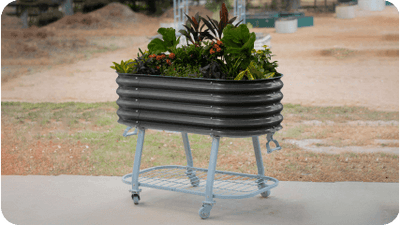








































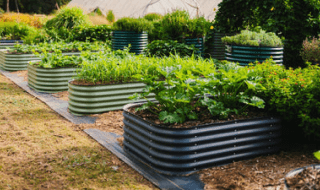
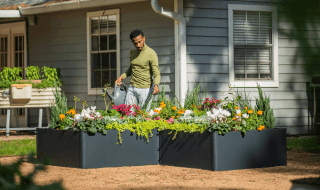
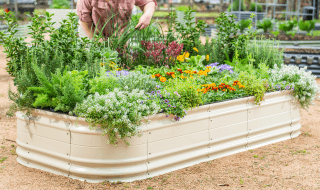
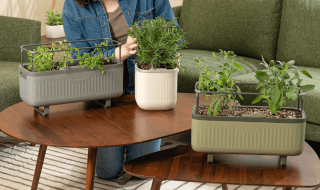
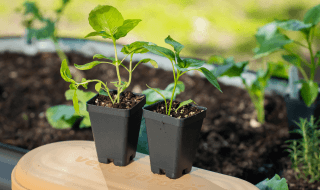
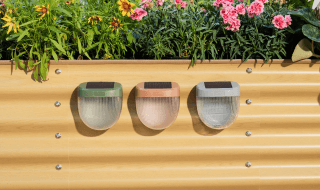
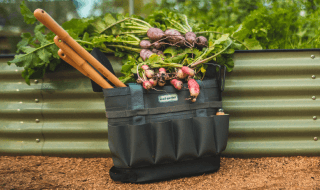
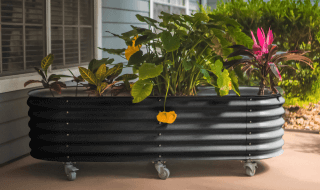







Leave a comment